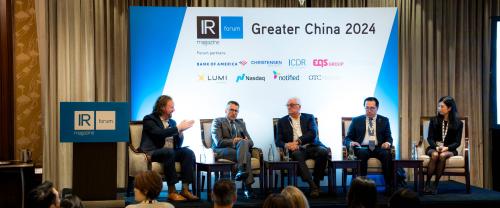Last week IR Magazine looked at how Mifid II – the mammoth European regulation that came into force at the start of 2018 – had impacted research.
In brief, European institutional investors cut budgets for external European equity research by almost a fifth in 2018, according to Greenwich Associates, which predicts a further 5 percent to 6 percent cut in 2019. It adds that around half of that spend is still directed toward global investment banks.
At the same time, research from the UK’s IR Society among its FTSE 250 and small and mid-cap members shows that 60 percent have experienced a drop in coverage since Mifid II came into force, though the society notes that, for many, this is a one or two-analyst drop. For the 40 percent of companies that have not seen a cut to coverage, the society says ‘some note the issue is around the quality and length of research and the level of experience of analysts.’
The impact on consensus
Even before Mifid II came into force, IROs were increasingly compiling their own consensus for external publication. Speaking to IR Magazine’s Andrew Holt in 2017, Alex Money, founder and managing director of ACE Consensus, said his firm’s own research showed that in 2011 ‘less than one third of FTSE 100 [firms] compiled their own consensus for external consumption. By 2016, more than three quarters were doing so, though many investors continue to rely on consensus forecasts from data aggregators.’
Money noted at the time, however, that data aggregators might suffer as a result of Mifid II – something Laura Hayter, head of policy and communications at the IR Society, says the organization is also aware of and something IROs should keep an eye on.
‘As market dynamics evolve following Mifid II implementation, data aggregators may become more inaccurate on consensus data as sell-side research notes are behind a paywall,’ she tells IR Magazine. ‘At the end of last year, one major investment bank had already pulled the publication of the analyst numbers from data aggregators, and this is a trend we expect to continue.’
Another trend Hayter expects to play out over 2019 is one where smaller companies seek to publish more information in order to manage expectations. ‘As smaller companies may see a reduction in sell-side coverage, therefore affecting consensus, they may need to consider giving market guidance on key metrics with their advisers in order to manage market expectations,’ she says.
This taking control is something the organization sees as a good thing. ‘The IR Society encourages IR to take control of gathering and managing consensus,’ explains Hayter. ‘Collecting consensus directly (or via a service provider) also ensures you can understand how analysts build and work their model on your company.’
And indeed, even in pre-Mifid times, many companies compiled and published their own consensus – particularly those in Europe. How to manage your sell-side coverage, a 2017 report by IR Magazine, showed that almost four out of five companies (79 percent) on a global basis were creating their own internal consensus figures. European respondents were keenest at 87 percent.
The report also found that larger companies were more likely to compile internal consensus – likely due to the heavy workload involved – while a high of almost 50 percent of European firms released those numbers to the market. The research found that the most popular ways to do this were either via email or by listing them on the website, and Hayter has some advice for companies considering this option: ‘If you are publishing analyst consensus on your website, we would suggest clearly stating how many it covers.’
While the report acknowledges the workload that goes into compiling in-house estimates, it also notes that smaller companies are least likely both to compile their own consensus (65 percent compared with a high of 88 percent at large caps) and to publish those numbers: just 17 percent of small-cap companies do so, compared with 32 percent of mega-caps. But as smaller firms are most likely to suffer the adverse effects of Mifid II on research, this could well become a more attractive prospect.
Overall, consensus could be seen as being somewhat peripheral to Mifid II, but its impact – given its reliance on analyst coverage – is likely to be no less significant.










